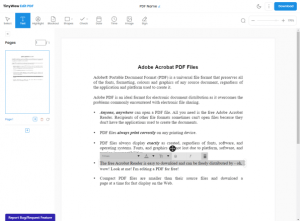— July 7, 2017

3dman_eu / Pixabay
In an average call center, agents would spend 85% of their day attending to the needs of their clients. This would mean that 15% of their work hours are dedicated to move from one call to the other. That 15% would give the agent roughly only a few seconds to encode the status of the recently ended call. As daunting as it may seem, technology has allowed this feat to be completely doable. Call dispositions have been introduced to make these transitions as seamless as possible, thus, lessening the agent’s occupancy rate to prevent them from burning out.
A call disposition is a new key feature added to most CRM’s. This tool is equipped with codes that provide remarks on the outcome of an agent’s concluded call with a client. It also serves as a clear distinction to separate inbound and outbound calls to maintain the team’s alignment. When synced to your company’s CRM, call disposition codes provide updates on points like: troubleshooting of concerns, completion of transactions, complaints of customers, disconnection of contact’s number, and following-up of contacts.
Your call disposition list will be filled with various codes to aid both agent and manager in assessing call turnouts. One common problem faced by most call centers is the inability of agents to respond with quick-fixes to their clients’ queries. Some organizations tend to have one agent spending too much time trying to resolve one query; while others would have their customers go through a series of agents before a query is answered. The issue of “poor first-call-resolution rates” can effectively be remedied through the implementation of disposition codes like:
- Abandoned in queue
- Appointment scheduled
- Busy
- Callback
- Complaint
- Complete
- Disconnected number
- Incorrect number
- Not interested
- Product question
- Requires follow up
- Requires supervisor attention
- Refund
- Sales closed
- Tech support
Yes, these helpful tools can be personalized to suit your existing pipeline. The codes stated above are just examples you can use to get your call disposition function going. Collaborating with your agents as to which codes to use will be wise as they have first-hand knowledge of what happens with every phone call. By creating a list of codes tailored to your organization’s system of operations, managers are given a bird’s eye view of each agent’s performance.
In coming up with a list of codes, most companies, those who have been using these helpful tools, advise that you only limit the number of codes to use. Yes, a long list will deliver a more detailed and specific analysis of your calls; but having such can also eat up a chunk of a manager’s time. The more disposition codes they’ll have to scan through, the longer it takes for your higher-up’s to figure out the exact reason for a call’s failure or success. Another helpful tip for optimizing your codes is to capture customer emotions. Include in your disposition logs helpful details that will hopefully illustrate how your customers were reacting during the call.
Ensuring Campaign Effectiveness
The inclusion of call disposition codes is essential in ensuring quality customer service for both inbound and outbound agents. These two fields may vary in the way calls are coursed, but both have the same goal which is aided by these codes. For both inbound and outbound, what you hope to log in would either be “sales closed” or “appointment scheduled.” And the status you would want to avoid, specifically for inbound, would be “abandoned call.” Call abandonment—an occurrence that results when a client is kept waiting in line for a relatively long period of time—has a reported average of 35%, and is a growing number that decision makers can put a stop to by implementing call disposition codes. By equipping your CRM with this set of codes, managers of both inbound and outbound campaigns are given an idea of their agents’ individual conversion rates. Through this, one can easily leave those well-performing agents to their own devices, and pay extra attention to those who are falling short of your expectations.
Every call center is equipped with both inbound and outbound campaigns, and the success of the two is detrimental to the success of the whole company. Developing a well laid out strategy entails putting the customer’s welfare first; and in the process of creating this, an agent’s performance is subjected under a few metrics like: average handling time, forecasting accuracy, contact quality, customer satisfaction; and first-call resolution. And a quick view of your call dispositions will provide you the necessary information to formulate strategies that are completely customer-driven.
Business & Finance Articles on Business 2 Community
(144)







